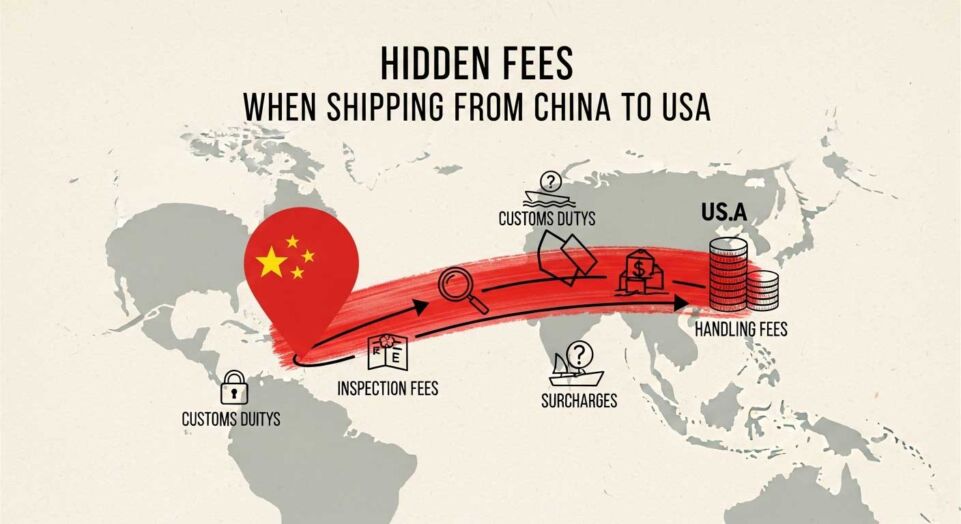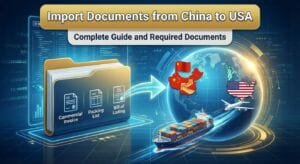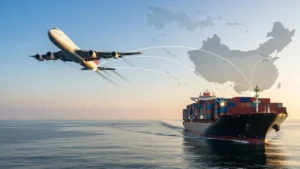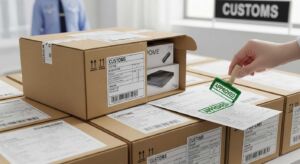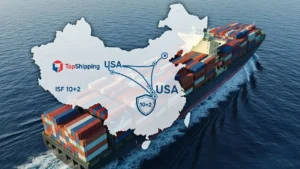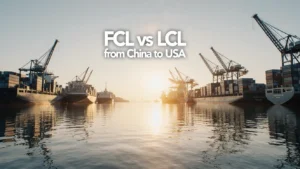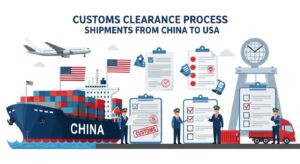Shipping from China to the USA can seem straightforward until unexpected costs start adding up. Many importers are surprised by hidden fees that appear after booking a shipment, such as customs charges, documentation costs, and port handling fees. Understanding these extra costs is essential to avoid budget overruns and shipping delays.
In this guide, we’ll uncover the most common hidden fees when shipping from China to the USA, explain why they happen, and share practical tips to reduce or eliminate them in 2025.
What Are Hidden Fees When Shipping from China to USA?

Definition and Overview of Hidden Shipping Charges
When shipping from China to the USA , hidden fees refer to unexpected costs that are not clearly stated in the initial freight quote. These can include additional charges for customs clearance, port handling, warehousing, documentation, or fuel surcharges. Many freight forwarders or suppliers may provide a low base rate to attract customers but later add these extra fees, making the total shipping cost much higher than expected. Understanding these hidden shipping fees helps importers plan their budget accurately and avoid financial surprises during the logistics process.
Why Importers Often Miss These Costs?
Importers especially first-time buyers often overlook hidden fees because international shipping quotes can be complex. Freight rates from China to the USA are influenced by various factors like Incoterms, carrier policies, and destination regulations. Many suppliers only highlight the “freight cost” without mentioning destination charges, customs duties, or documentation fees. This lack of transparency makes it easy for importers to underestimate the real cost of shipping. Working with a trusted freight forwarder and reviewing all potential surcharges in advance can help avoid these unexpected expenses.
Common Hidden Fees When Shipping from China to USA
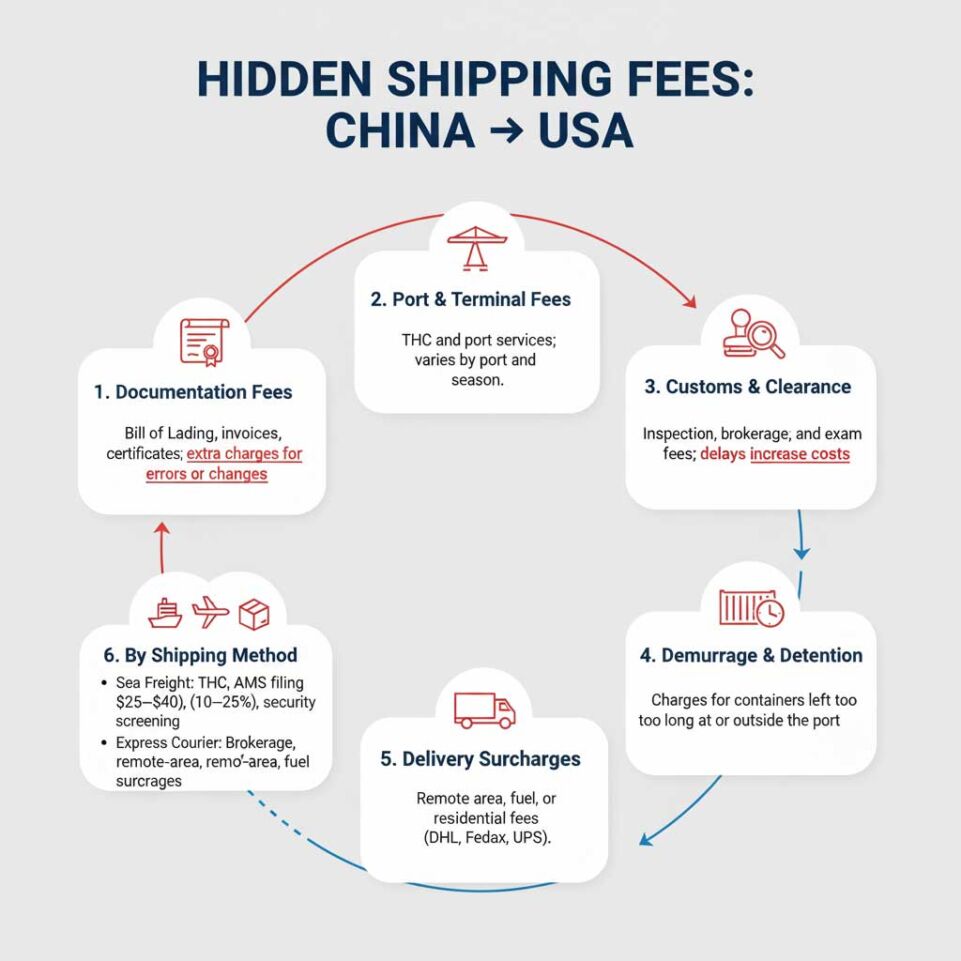
Even experienced importers can be caught off guard by unexpected expenses in the shipping process. Below are the most frequent hidden fees when shipping from China to USA that can significantly affect your total logistics cost.
Documentation Fees (Bill of Lading, Certificates, etc.)
Documentation fees cover the administrative costs of preparing essential shipping papers, including the Bill of Lading , commercial invoice, packing list, and certificate of origin. Some forwarders or carriers charge extra for document preparation or changes after booking. While the base freight quote might not mention these charges, missing or incorrect documents can delay customs clearance and lead to additional penalties, making it crucial to review your paperwork costs before shipping.
Port Handling and Terminal Fees
Once your cargo arrives in a U.S. port, terminal handling charges (THC) and port service fees are applied for unloading, storage, and cargo movement inside the terminal. These costs are usually not included in the original quote from China. Depending on the portsuch as Los Angeles, Long Beach, or New York terminal fees can vary widely and may increase during peak seasons. Importers should confirm in advance whether their shipping quote includes THC to avoid surprise charges.
Customs Inspection and Clearance Charges
U.S. Customs may randomly inspect your shipment to verify compliance with import regulations. If your cargo is selected, you’ll be responsible for customs inspection fees, brokerage costs, and sometimes exam fees for agricultural or security reasons. These inspections can cause both extra costs and time delays. Working with a reliable freight forwarder in China can help minimize risks by ensuring all paperwork and product declarations are accurate and compliant.
Demurrage and Detention Fees
If your containers stay too long at the port or are not returned within the carrier’s free time, demurrage (for storage at the port) and detention fees (for holding the container outside the port) will apply. These hidden shipping costs can escalate quickly, especially during customs delays or public holidays. Planning efficient cargo pickup and working with a forwarder that provides real-time tracking can help you avoid these expensive penalties.
Delivery Surcharges or Remote Area Fees
Some delivery destinations in the USA are considered remote areas, where transportation companies charge extra for last-mile delivery. Additionally, fuel surcharges or residential delivery fees might be added to the final invoice. This is common in door-to-door shipping from China to USA, where carriers like DHL, FedEx, and UPS adjust their pricing based on location and accessibility. Always verify if your delivery address falls into a surcharge zone to budget accurately.
Hidden Fees by Shipping Method
The total cost of shipping from China to the USA depends not only on distance and cargo size but also on the transportation method you choose. Each shipping method sea freight, air freight, or express courier has its own set of hidden fees that importers often overlook. Understanding these charges helps you choose the most cost-effective solution for your business.
Sea Freight Hidden Fees (THC, AMS Filing, ISF Fee)
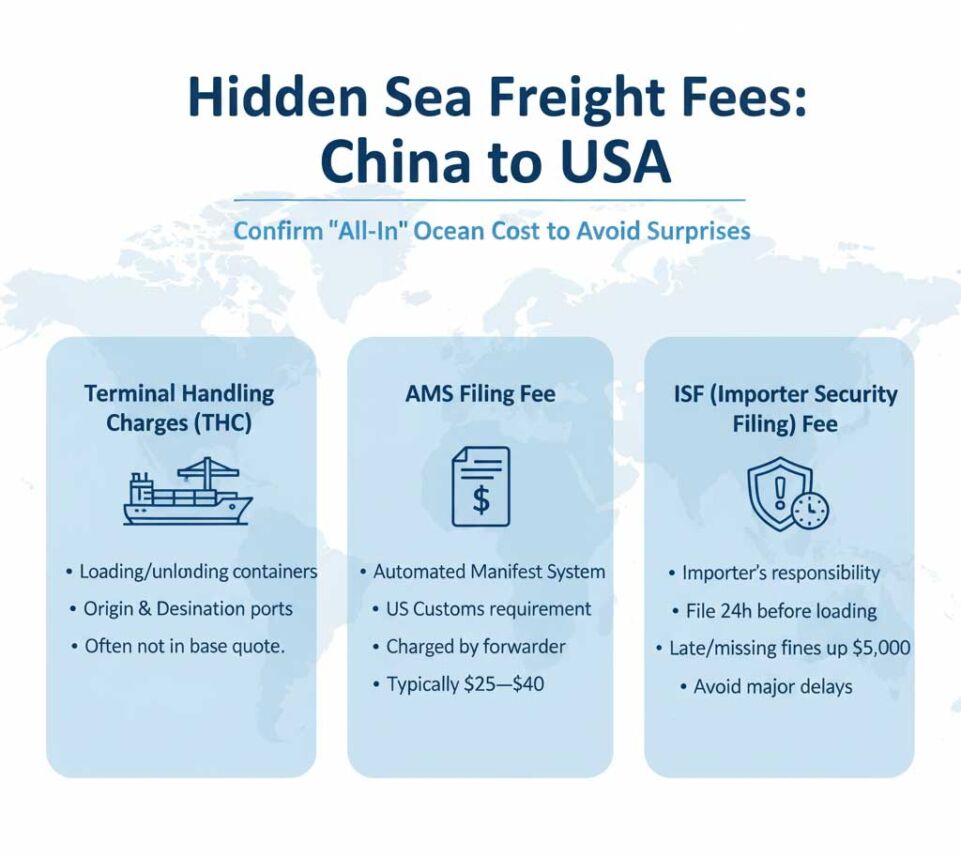
Sea freight is one of the most popular ways to move bulk cargo from China to the USA due to its lower base rate. However, it also comes with several hidden shipping fees that can add up quickly.
- Terminal Handling Charges (THC): Fees for loading, unloading, and handling containers at both origin and destination ports.
- AMS (Automated Manifest System) Filing Fee: A U.S. Customs requirement that must be filed before cargo departure. Your forwarder or carrier usually charges $25–$40 for this service.
- ISF (Importer Security Filing) Fee: Importers must file ISF at least 24 hours before cargo loading. Late or missing ISF filings can lead to fines up to $5,000.
These hidden fees often appear after booking and are not always included in the initial sea freight quote. Always confirm your total “all-in” ocean freight cost with your freight forwarder in China before shipping.

Air Freight Hidden Fees (Fuel Surcharges, Security Screening)
Air freight is faster but also prone to unexpected fees. The most common include:
- Fuel Surcharges: Airlines frequently adjust these based on global fuel prices, sometimes adding 10–25% of the freight rate.
- Security Screening Fees: All air shipments must undergo X-ray or manual inspection before departure, and the cost depends on cargo size and type.
While these charges ensure safety and compliance, they can make air freight considerably more expensive than anticipated. It’s essential to ask for a “breakdown quote” to reveal all hidden costs when shipping from China to USA by air.
Express Courier Hidden Fees (Brokerage, Remote Area Delivery)
Express courier services such as DHL, FedEx, and UPS are ideal for small parcels and urgent deliveries, but they often include hidden charges not shown in the advertised rate.
- Brokerage Fees: Applied for handling customs paperwork and clearance on your behalf.
- Remote Area Delivery Fees: Extra charges for destinations far from major cities or airports in the USA.
In some cases, express couriers may also apply fuel surcharges or oversize package fees depending on weight and dimensions. If you’re using door-to-door shipping from China to USA , check whether these surcharges are included to prevent surprises at delivery.
Why Do Hidden Fees Occur When Shipping from China to USA?
Hidden fees when shipping from China to USA often arise because of complex logistics, unclear communication, and varying international regulations. Importers who don’t fully understand their shipping terms or fail to verify all related costs may face unexpected expenses once their goods reach the U.S. Let’s look at the most common reasons behind these hidden charges.
Miscommunication Between Supplier and Freight Forwarder
A major reason hidden shipping fees occur is miscommunication between the supplier in China and the freight forwarder handling the shipment. Sometimes, suppliers assume that freight quotes include all destination charges, while forwarders only cover transportation up to the port. This misunderstanding leads to extra costs for customs clearance, documentation, or inland delivery in the USA. To avoid this, ensure all parties clearly define who is responsible for each stage of the shipment from pickup to final delivery.
Incorrect Incoterm Selection (EXW, FOB, CIF, DDP)

Choosing the wrong Incoterm can result in major cost surprises.
- Under EXW (Ex Works), the buyer bears nearly all logistics costs, including export clearance and local transport in China.
- FOB (Free on Board) covers export handling but not destination port charges or customs duties in the USA.
- CIF (Cost, Insurance, and Freight) includes insurance and freight but excludes U.S. port and clearance fees.
- DDP (Delivered Duty Paid) shifts all costs to the seller, but only if correctly applied in the contract.
Misunderstanding these terms is one of the most common causes of hidden fees when shipping from China to USA. Importers should always confirm their exact responsibilities before finalizing the trade agreement.
Customs and Port Regulation Differences
Every country has unique customs procedures and port handling rules. The U.S., for instance, requires specific filings like ISF (Importer Security Filing) and AMS (Automated Manifest System) before goods depart from China. Failure to meet these requirements on time can trigger penalties or inspection fees. Additionally, port storage policies vary some ports offer only a few free days before demurrage fees start accruing. These regulatory differences often lead to hidden costs that importers don’t anticipate. Partnering with a knowledgeable freight forwarder familiar with both Chinese and U.S. customs regulations can significantly reduce these risks.
How to Avoid Hidden Fees When Shipping from China to USA?
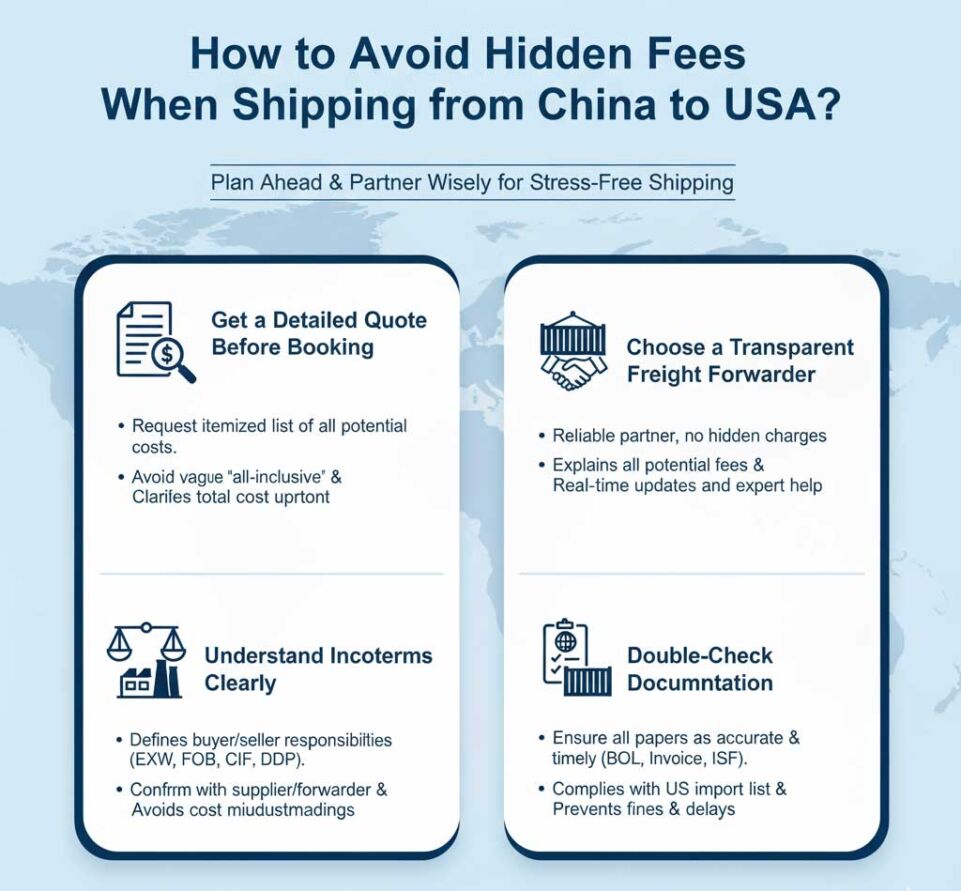
Avoiding hidden fees when shipping from China to USA starts with preparation, transparency, and the right logistics partner. Many of these unexpected costs can be prevented if you plan carefully and understand your shipping terms before finalizing your order. Below are practical steps to help you reduce or eliminate hidden shipping charges.
Get a Detailed Quote Before Booking
Always request a fully itemized quote before confirming your shipment. Ask your freight forwarder to list every potential cost including documentation fees, port handling, customs clearance, and delivery surcharges. Avoid vague terms like “all-inclusive” unless they specify what’s covered. A detailed quotation gives you a clear picture of the total cost and prevents unpleasant surprises once your cargo arrives in the USA.
Choose a Transparent Freight Forwarder
Working with a reliable and transparent freight forwarder is one of the best ways to avoid hidden fees. A professional forwarder will explain every part of the shipping process, outline possible extra charges in advance, and provide real-time updates throughout the journey. Companies like Topshipping are known for offering honest, all-inclusive pricing and expert assistance with customs documentation, helping importers avoid unnecessary costs when shipping from China to USA.
Understand the Chosen Incoterm Clearly
Each Incoterm defines who pays for which part of the shipping process. Misunderstanding your chosen term whether EXW, FOB, CIF, or DDP can lead to hidden fees for handling, insurance, or customs duties. Make sure your supplier and freight forwarder agree on the same Incoterm and responsibilities. Clarify all delivery points and payment terms in writing before shipment.
Double-Check Customs and Documentation Requirements
Incomplete or incorrect documentation is a leading cause of additional fees during customs clearance. Before shipping, verify that all necessary documents such as the Bill of Lading, commercial invoice, packing list, and Import Security Filing (ISF) are accurate and submitted on time. Understanding both Chinese export regulations and U.S. import laws ensures your cargo moves smoothly without delays, fines, or inspection charges.
Example Case: How a Small Business Lost $900 in Hidden Fees
In 2024, a small online retailer from California ordered a batch of home decor items from a supplier in Shenzhen, China. The supplier offered an attractive FOB (Free on Board) shipping term and quoted a low freight rate. Believing the offer covered most expenses, the importer went ahead without asking for a detailed cost breakdown.
When the goods arrived at the Port of Los Angeles, the importer was surprised to receive unexpected bills:
- $350 in terminal handling charges (THC)
- $250 for customs clearance and documentation
- $300 in storage and demurrage fees due to a two-day delay in cargo pickup
In total, the business lost around $900 in hidden fees. The issue arose because the importer misunderstood the Incoterm under FOB, all destination charges in the USA were the buyer’s responsibility.
Had the importer requested a transparent quote or clarified the Incoterm details with a professional freight forwarder, these surprise costs could have been avoided. This case shows how easily hidden fees when shipping from China to USA can impact profit margins, especially for small businesses with limited budgets.
Best Practices for a Smooth, Transparent Shipping Experience
Avoiding hidden fees when shipping from China to USA isn’t just about knowing what to watch for it’s about building good logistics habits. By following a few best practices, importers can ensure a smoother and more predictable shipping experience, free from last-minute surprises or unplanned expenses.
Work with Reliable Freight Forwarders in China
Partnering with an experienced and trustworthy freight forwarder in China is the most effective way to eliminate confusion and avoid hidden shipping costs. Reliable forwarders provide clear communication, handle customs and port procedures professionally, and alert you to any potential surcharges in advance. Companies like Topshipping specialize in transparent pricing, giving importers full visibility into each step of their China-to-USA shipping process.
Request a Full Cost Breakdown (No Surprises)
Always insist on a detailed cost breakdown before confirming any shipment. The quote should list base freight charges, documentation fees, port handling, customs clearance, insurance, and last-mile delivery costs. Avoid one-line “all-in” quotes that hide extra fees under general terms. Transparent pricing allows you to budget accurately and prevents unexpected invoices once your goods arrive in the United States.
Track and Manage All Shipping Documents Carefully
Proper document management is essential for smooth customs clearance and cost control. Keep digital copies of all critical documents such as the Bill of Lading, commercial invoice, packing list, and Import Security Filing (ISF). Tracking each step of the shipping process ensures you can quickly address any issues that could otherwise lead to penalties, delays, or added costs. Organized documentation also protects your business in case of disputes with carriers or customs authorities.
Final Thoughts : Transparency Is the Key
Hidden fees when shipping from China to USA can quickly turn a profitable order into an expensive setback. The best way to protect your business is to plan ahead, understand all potential charges, and work with a reliable logistics partner. Clear communication, careful document management, and a full understanding of your Incoterms are essential steps to avoid unexpected costs and delays.
For importers looking for a hassle-free experience, Topshipping offers transparent quotes, expert guidance, and end-to-end support for shipments from China to the USA. By partnering with a trusted freight forwarder, you can focus on growing your business while ensuring your shipments arrive on time and on budget in 2025.
FAQ :Hidden Fees When Shipping from China to USA
What are hidden fees in sea freight from China to the USA?
Common hidden fees include Terminal Handling Charges (THC), AMS filing ($25–$40), and ISF fees. Delayed ISF filing can result in fines up to $5,000.
Why does air freight from China cost more than expected?
Answer: Air freight may have fuel surcharges (10–25%) and security screening fees, which can increase total costs. Always request a full breakdown before booking.
Are express courier shipments subject to hidden fees?
Yes, services like DHL, FedEx, and UPS may add brokerage fees, remote-area delivery charges, and fuel surcharges. Confirm all charges for door-to-door shipping.
How can I avoid unexpected shipping fees?
Ask your freight forwarder or courier for a detailed all-in quote and clarify any potential surcharges before shipment.
Do destination locations affect hidden fees?
Answer: Yes, remote or less accessible areas in the USA often incur extra charges. Always check if your delivery location adds fees.
What is ISF and why is it important?
Answer: ISF (Importer Security Filing) is a U.S. Customs requirement for sea shipments. Missing or late filing can result in fines, so ensure your forwarder handles it properly.
Are fuel surcharges fixed?
No, fuel surcharges for air and express shipments fluctuate with global fuel prices, so costs may vary at the time of shipping.
Should I expect hidden fees in door-to-door shipping?
Answer: Yes, even in door-to-door services, some fees like brokerage or remote-area delivery may not be included. Always confirm with your courier.
Can hidden fees make sea freight more expensive than air freight?
Sometimes yes—if multiple surcharges accumulate, sea freight’s total cost can approach or exceed air freight, so always calculate the all-in price.
How can I get the most transparent shipping quote?
Answer: Request an itemized quote listing all fees (THC, AMS, ISF, fuel, security, brokerage, remote-area charges) and confirm it before shipment.

